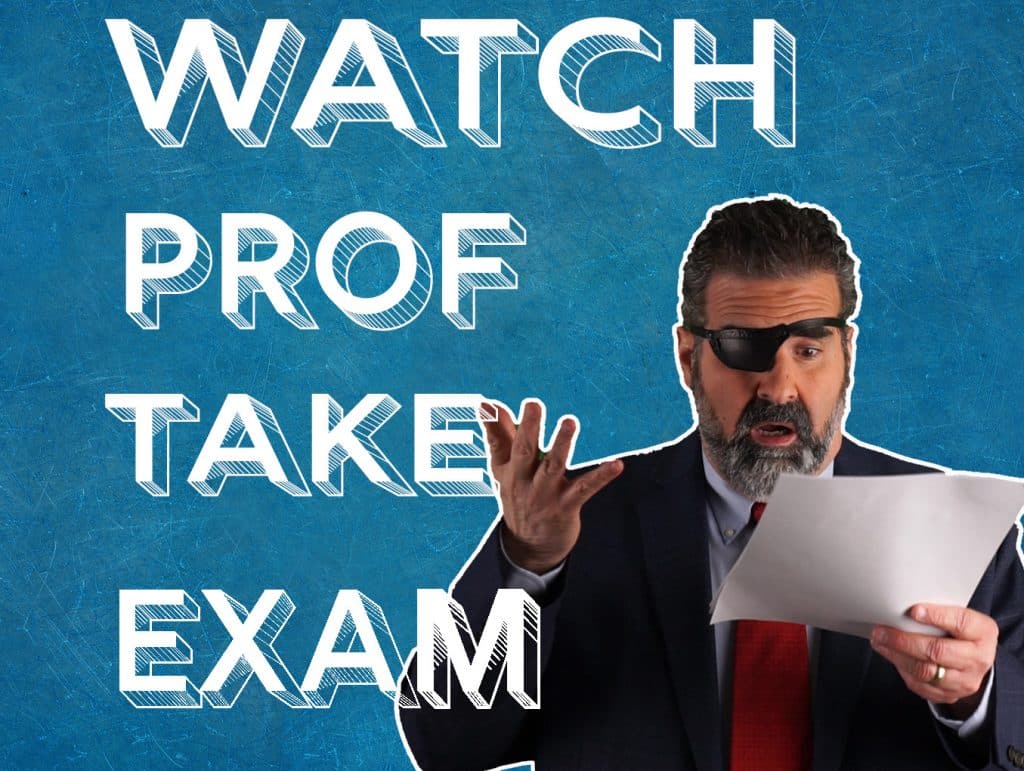I created a video, watch a professor take an essay exam, where I take a torts bar exam question I’ve never seen before. Using bar exam conditions, I limited my time to 30 minutes and took it closed book. This process was useful for me, because it reminded me of the extreme pressure my students encounter on the bar exam and on law school exams.
Useful Exercise
 There are several reasons why students will find this exercise valuable. One, it helps them understand that even an expert struggles to complete a bar exam in 30 minutes. Two, they can observe how an expert uses their time to first prepare to write and then write. I then wrote the exam using the Nested IRAC method, an organization technique to ensure you don’t miss anything. Three, they can see an expert make mistakes, and still earn a decent grade on the exam.
There are several reasons why students will find this exercise valuable. One, it helps them understand that even an expert struggles to complete a bar exam in 30 minutes. Two, they can observe how an expert uses their time to first prepare to write and then write. I then wrote the exam using the Nested IRAC method, an organization technique to ensure you don’t miss anything. Three, they can see an expert make mistakes, and still earn a decent grade on the exam.
The second part of this exercise was to grade the exam using a grading rubric used by many state bar examiners. I first discussed the grading rubric, then reviewed the bar exam grader’s model answer, and finally reviewed my essay.
Comparing Answers
As I compared my answer to the model answer, I was surprised by a few things. For starters, I noticed that the grader was assigning points almost exclusively for duty and breach of duty. Yet the call of the question asked me to “explain” my answer. I understood this to mean a full negligence discussion. That required not only duty and breach, but also actual cause, proximate cause, and damages. To do this for each of the three plaintiffs was impossible on a 30 minute exam–a poor job in designing this exam. A more focused question by the bar exam designers would have yielded better answers. Oh well, c’est la vie.
How Many Points?
Another problem with the essay question was the point allocation of 15% for the final issue on the unforeseeable extent of injury (i.e., the eggshell plaintiff rule). The call of the question appears to give it equal weight with the first question, which was comprised of three parts. Thankfully, I was running out of time when I got to this issue. Therefore, I did not spend more time on it than was necessary. But I didn’t know that when I was taking the exam. So the lesson here is to do your best. There really isn’t a way to know exactly what the grader is looking for. Make sure to discuss all the main issues, and if you have time then discuss minor issues.
The Documents
Here are the documents I used for this exercise:


